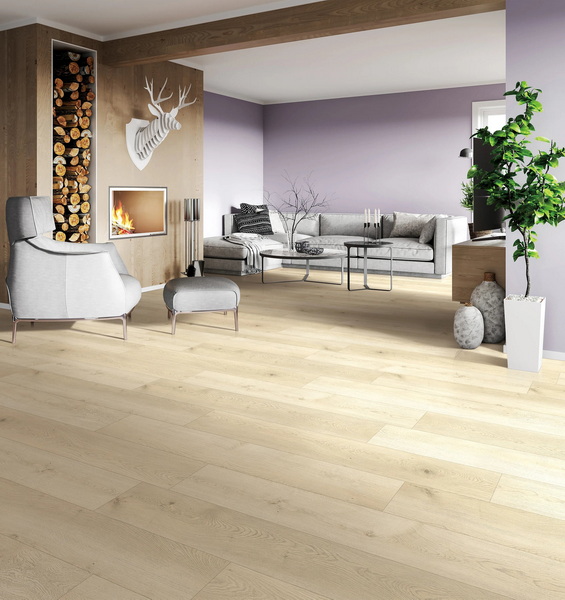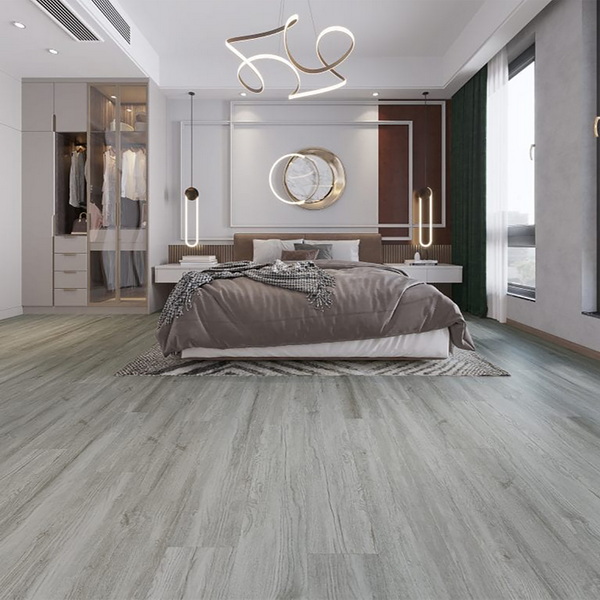Content Menu
● Introduction to Vinyl Flooring in Russia
● Vinyl Flooring Manufacturing Process in Russia
>> Core Materials and Components
>> Typical Production Steps
● Leading Vinyl Flooring Manufacturers and Suppliers in Russia
>> 1. Juteks
>> 2. Bobrov Company
>> 3. AspenFloor
>> 4. Floormonk (Exporter Serving Russia)
>> 5. Other Notable Manufacturers and Distributors
● Applications of Vinyl Flooring in Russia
>> Residential Use
>> Commercial Buildings
>> Public and Healthcare Facilities
>> Industrial Environments
>> Event and Exhibition Spaces
● Innovations and Trends Among Russian Vinyl Flooring Producers
>> Eco-Friendly and Sustainable Production
>> Digital Printing and Pixel-Perfect Design
>> Textured and 3D Embossing
>> Enhanced Protective Layers
>> Convenient Installation Systems
● Conclusion
● FAQ
>> 1. Who are the main vinyl flooring manufacturers and suppliers in Russia?
>> 2. What materials are typically used in Russian vinyl flooring?
>> 3. What are the common applications of vinyl flooring in Russia?
>> 4. How do Russian manufacturers ensure vinyl flooring quality and sustainability?
>> 5. Are OEM customization and branding services available?
Russia's vinyl flooring industry is rapidly evolving, merging local manufacturing expertise with advanced technologies and aligning closely with global design and sustainability trends. Vinyl flooring has become increasingly popular in Russia for its durability, moisture resistance, and design versatility, making it a preferred choice across residential, commercial, healthcare, and industrial markets. This article offers a comprehensive exploration of the top vinyl flooring manufacturers and suppliers in Russia, shedding light on their manufacturing processes, key market players, technological innovations, broad applications, and OEM customization capabilities. For foreign brands, wholesalers, and producers seeking trustworthy OEM partners, this guide provides valuable insights into Russia's dynamic vinyl flooring sector.

Introduction to Vinyl Flooring in Russia
Vinyl flooring is primarily composed of polyvinyl chloride (PVC) layered with decorative films and protective coatings, creating resilient and attractive flooring solutions. Russian manufacturers harness a blend of international standards, local production expertise, and eco-conscious practices to produce vinyl flooring that withstands Russia's diverse and often harsh climatic conditions.
Russian vinyl flooring is prized for several key reasons:
- Resistance to water, scratches, and stains, enabling excellent performance in wet and high-traffic areas.
- Easy installation and maintenance, minimizing downtime and upkeep costs.
- Wide-ranging styles from traditional wood and stone looks to contemporary geometric patterns.
- Compliance with both Russian and international safety and environmental regulations.
- Robust OEM capabilities enabling tailored products and branding for diverse customer needs.
Vinyl Flooring Manufacturing Process in Russia
Russian vinyl flooring production integrates sophisticated chemistry and precision engineering to deliver quality flooring. Leading manufacturers follow a hybrid approach merging traditional techniques with modern technological advancements.
Core Materials and Components
The essential materials used in Russian vinyl flooring manufacturing include:
- Polyvinyl Chloride (PVC) Resin: The main polymer providing strength and flexibility.
- Plasticizers: Chemicals added to increase vinyl flexibility and durability.
- Backing Layer: Typically fiberglass or felt materials that provide dimensional stability and support.
- Decorative Layer: High-definition printed films that replicate wood grains, stones, or abstract designs.
- Wear Layer: A transparent, abrasion-resistant layer that protects the printed décor from damage.
- Protective Coatings: Polyurethane or acrylic finishes further enhance scratch and stain resistance.
Typical Production Steps
1. Raw Material Preparation: PVC resins, plasticizers, pigments, and additives are blended into a liquid vinyl compound known as plastisol.
2. Layer Coating: This plastisol is applied to backing materials using rollers to form multi-layered sheets.
3. Heating and Gelation: Coated layers are heated to harden the plastisol, forming durable vinyl sheets.
4. Printing: High-precision rotogravure or digital printing applies the decorative patterns with superb clarity and consistency.
5. Wear Layer Application: A clear protective layer is applied on top of the decorative film.
6. Curing: Ultraviolet (UV) or thermal processes cure the wear layer, locking in durability.
7. Embossing: Optional embossing adds texture that is perfectly aligned with the printed patterns, enhancing realism.
8. Cutting and Packaging: The vinyl sheets or planks are cut to standardized sizes, inspected for quality, and prepared for shipment.
Recycling systems to reclaim production waste are increasingly incorporated, reflecting Russia's commitment to sustainable manufacturing.

Leading Vinyl Flooring Manufacturers and Suppliers in Russia
Russia is home to several prominent manufacturers and supply companies that produce vinyl flooring recognized for quality and innovation both locally and internationally.
1. Juteks
Juteks is among Russia's largest and oldest vinyl flooring producers, with state-of-the-art manufacturing facilities in the Vladimir region. They are renowned globally for industrial-scale PVC linoleum and vinyl production. Juteks emphasizes environmental responsibility, employing energy-saving technology, water recycling, and exhaust gas cleaning systems. Their diverse product range serves residential, commercial, healthcare, and institutional sectors throughout Russia, the CIS, and export markets. Juteks also offers OEM partnerships and customization.
2. Bobrov Company
Bobrov is a leading flooring supplier and distributor in Russia, representing top international brands like Tarkett. Established in 1997, Bobrov caters to diverse sectors including healthcare, education, hospitality, and industry. With multiple branches across Russia, they deliver widespread coverage and timely supply. Bobrov's expertise extends to OEM product sourcing and tailored logistical solutions for foreign brands seeking market entry or expansion.
3. AspenFloor
AspenFloor partners with leading Russian and European manufacturers to supply a broad range of vinyl flooring products and accessories. With strategic branches in major Russian cities, AspenFloor offers robust distribution and customer service for wholesalers, retailers, and corporate clients. Their portfolio ranges from residential-grade vinyl to commercial SPC (stone plastic composite) flooring options.
4. Floormonk (Exporter Serving Russia)
Though not a domestic manufacturer, Floormonk is a prominent exporter of SPC and vinyl flooring products targeted at the Russian market. Their product offerings are praised for strength, versatile designs, and adaptability to Russia's climatic challenges. Floormonk supports OEM clients with reliable supply chains, innovative product designs, and compliance with international standards.
5. Other Notable Manufacturers and Distributors
Various regional Russian companies combine local manufacturing with import distribution to service niches such as industrial vinyl flooring, healthcare-specific surfaces, and premium residential products. These players are increasing their use of advanced materials and technologies to meet growing market demands.
Applications of Vinyl Flooring in Russia
Vinyl flooring's flexibility and performance have driven its adoption across numerous Russian sectors.
Residential Use
Widely installed in apartments and family homes, vinyl flooring resists moisture and is easy to clean, making it ideal for kitchens, bathrooms, and entryways. Its varied aesthetic options cater to both classical and contemporary interiors.
Commercial Buildings
Offices, retail outlets, restaurants, and hotels rely on vinyl flooring for its durability, noise reduction properties, and attractive finishes. It withstands continuous foot traffic while maintaining a polished appearance.
Public and Healthcare Facilities
Seamless vinyl installations with antimicrobial properties reduce infection risks, meeting strict hygiene and safety regulations in hospitals, clinics, schools, and public buildings.
Industrial Environments
Heavy-duty vinyl products offer chemical resistance, high abrasion tolerance, and impact resistance, meeting the needs of warehouses, factories, and workshops.
Event and Exhibition Spaces
Vinyl flooring enables quick installation and removal for temporary setups such as trade show booths, concert stages, and conference venues. Customization options allow for branded or thematic designs.
Innovations and Trends Among Russian Vinyl Flooring Producers
Russian manufacturers increasingly adopt innovative solutions to stay competitive and respond to market demands.
Eco-Friendly and Sustainable Production
Many producers emphasize recycled content, low VOC emissions, and energy-efficient production to align with global sustainability goals.
Digital Printing and Pixel-Perfect Design
Modern printing technology lets manufacturers reproduce ultra-realistic wood, stone, and abstract patterns, expanding consumer choices and customization.
Textured and 3D Embossing
Embossing aligned with print patterns adds tactile depth and visual realism that enhance product appeal and user experience.
Enhanced Protective Layers
New wear layers formulated with advanced resins improve resistance to scratches, stains, and fading to prolong flooring life.
Convenient Installation Systems
Innovations include click-lock, loose lay, and adhesive-backed vinyl tiles and planks that reduce installation time and labor costs, appealing to professionals and DIY consumers alike.
Conclusion
Russia's vinyl flooring manufacturers and suppliers are growing in prominence, offering products that combine innovation, quality, and ecological responsibility. Leading domestic producers like Juteks and key suppliers such as Bobrov harness advanced manufacturing methods and environmental awareness to deliver durable, stylish vinyl flooring solutions suitable for residential, commercial, healthcare, and industrial environments. Supported by solid OEM capabilities and extensive distribution networks, Russia's vinyl flooring sector is well-positioned to meet growing domestic and international demand. Collaborating with these manufacturers and suppliers guarantees access to flooring products precisely engineered for Russia's unique requirements, promising longevity, aesthetic versatility, and cutting-edge production standards.

FAQ
1. Who are the main vinyl flooring manufacturers and suppliers in Russia?
Prominent players include Juteks, a leading manufacturer of PVC linoleum and vinyl; Bobrov, a major supplier and distributor; AspenFloor, a notable supplier with wide product coverage; and exporters like Floormonk serving the Russian market.
2. What materials are typically used in Russian vinyl flooring?
Polyvinyl chloride (PVC) resin, plasticizers for flexibility, fiberglass or felt backing layers, high-definition printed decorative films, and durable polyurethane or acrylic wear layers are commonly employed.
3. What are the common applications of vinyl flooring in Russia?
Vinyl flooring is used extensively in residential homes, commercial offices, healthcare facilities, industrial sites, and temporary event spaces due to its durability, water resistance, and design flexibility.
4. How do Russian manufacturers ensure vinyl flooring quality and sustainability?
Manufacturers invest in advanced production technologies, recycling initiatives, VOC emission controls, and adhere to Russian and international quality and environmental standards.
5. Are OEM customization and branding services available?
Yes, most leading Russian manufacturers and suppliers offer comprehensive OEM services, including custom designs, surface treatments, specialized packaging, and tailored logistics to meet foreign brand requirements.






















